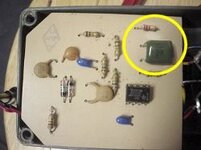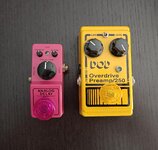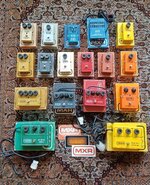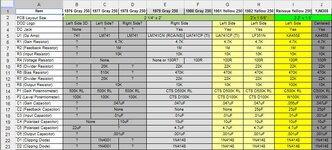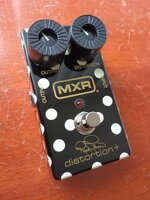SteveGlitch
Banned
Well-known member
the problem with those gut shot pics is I can't read any values on the resistors .... or the caps ...
but they look like they have the equal amount of the same type of parts ....
it's only a matter of time before a Pedal Forum of some type will have this traced and ready for tagboard .
unless someone wants to send me a really good pic of the inside so I can actually see the color bands on the resistors ... there's no need to trace
I highly doubt they manipulated that tiny circuit by just moving some components around .... so if theres a difference it will be in the values ...
I mentioned before .... when this pedal was brought up months ago .... I rersearched the shit out of " did Randy's get modded and what were those mods "
All I found was a conversation or two about the possibility of having a cap removed .... and possibly a value change on a resistor .
those A/B gutshots someone showed ..... there's an equal amount of parts .... of the same type .. so if a cap was removed in Randy's ... they didn't remove it there ...
and just to give reference of a small distortion circuit vs a big one .... that Disto + has like 16 total PCB parts .. this is the inside of my Erebos Distortion Pedal
View attachment 338151

